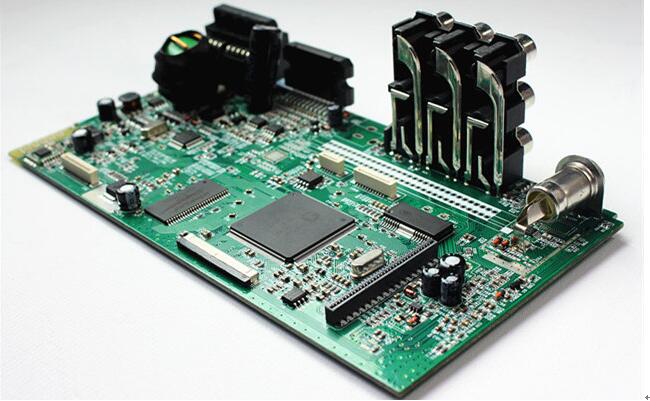When the temperature of a high Tg PCB rises to a certain threshold, the substrate will change from the "glass state" to the "rubber state". The temperature at this time is called the glass transition temperature (Tg) of the board. That is, Tg is the highest temperature (°C) at which the base material maintains rigidity. That is to say, ordinary PCB substrate materials will continue to soften, deform, and melt at high temperatures. At the same time, they will also show a sharp decline in mechanical and electrical characteristics. This will affect the service life of the product. Generally, the Tg plate is 130 degree Celsius above, high Tg is generally greater than 170 degree Celsius, medium Tg is greater than 150 degree Celsius; usually Tg ≥ 170 degree Celsius PCB printed board, called high Tg printed board; substrate Tg increased, printed board heat resistance, Features such as moisture resistance, chemical resistance, and stability will be improved and improved. The higher the TG value, the better the temperature resistance of the board. Especially in the lead-free process, high Tg is used more; high Tg refers to high heat resistance. With the rapid development of the electronic industry,

especially the electronic products represented by computers, the development of high functionality and high multilayers requires higher heat resistance of PCB substrate materials as a prerequisite. The emergence and development of high-density mounting technologies represented by SMT and CMT have made PCBs more and more inseparable from the support of high heat resistance of substrates in terms of small aperture, fine wiring, and thinning.
Therefore, the difference between general FR-4 and high Tg: at the same high temperature, especially when heated after moisture absorption, the mechanical strength, dimensional stability, adhesiveness, water absorption, thermal decomposition, thermal expansion, etc. of the material There are differences in this situation. High Tg products are obviously better than ordinary PCB substrate materials.
PCB board knowledge and standards At present, there are several types of copper clad laminates that are widely used in our country, and their characteristics are as follows: the types of copper clad laminates, the knowledge of copper clad laminates, and the classification methods of copper clad laminates. Generally, according to the different reinforcing materials of the board, it can be divided into five categories: paper base, glass fiber cloth base, composite base (CEM series), multi-layer laminate base and special material base (ceramic, metal core base, etc.). If classified according to the different resin adhesives used in the board, the common paper-based CCI. There are: phenolic resin (XPc, XxxPC, FR-1, FR-2, etc.), epoxy resin (FE-3), polyester resin and other types. Common glass fiber cloth base CCL has epoxy resin (FR-4, FR-5), which is currently the most widely used type of glass fiber cloth base. In addition, there are other special resins (with glass fiber cloth, polyamide fiber, non-woven fabric, etc. as additional materials): bismaleimide modified triazine resin (BT), polyimide resin (PI), Diphenylene ether resin (PPO), maleic anhydride imine-styrene resin (MS), polycyanate resin, polyolefin resin, etc. According to the classification of CCL's flame-retardant performance, it can be divided into flame-retardant type (UL94-VO, UL94-V1 level) and non-flame-retardant type (UL94-HB level). In the past one or two years, as more attention has been paid to environmental protection issues, a new type of non-bromine-free CCL has been divided into flame-retardant CCL, which can be called "green flame-retardant cCL". With the rapid development of electronic product technology, there are higher performance requirements for cCL. Therefore, from the performance classification of CCL, it is divided into general performance CCL, low dielectric constant CCL, high heat resistance CCL (normal board L is above 150 degree Celsius), low thermal expansion coefficient CCL (usually used on package substrates) ) And other types. With the development and continuous progress of electronic technology, new requirements for PCB substrate materials continue to be put forward, thereby promoting the continuous development of copper clad laminate standards.